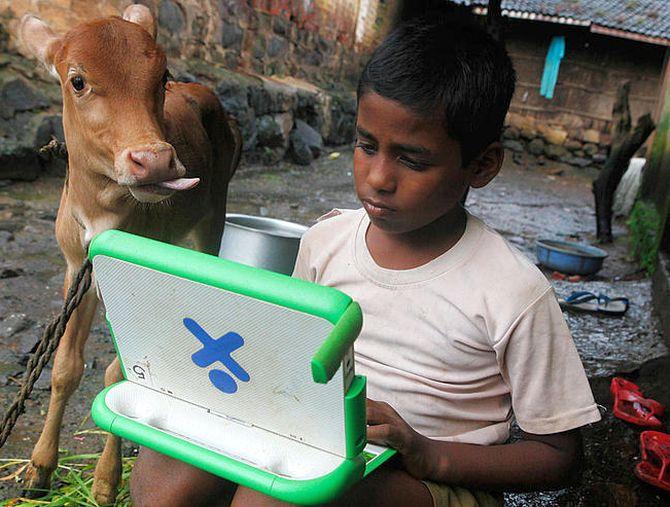There has been a 45 per cent growth in ‘active internet users' in rural India since 2019, according a study by Nielsen, a global company for audience measurement, data and analytics.

The Bharat 2.0 Internet report said that female active internet users grew by 61 per cent since 2019.
The report said that India has 646 million active Internet users aged 2 years and above as of December 2021.
Rural India has 352 million internet users--almost 20 per cent higher than urban.
The study also revealed that almost 60 per cent of the rural population is still not actively using the internet, paving headroom for further growth.
Urban India on the other hand has registered a 59 per cent penetration growth with 294 million active internet users.
Dolly Jha, managing director, Nielsen India, said that there is the availability of budget smartphones and affordable mobile data along with the Indian government’s efforts to strengthen the existing digital infrastructure.
These are through compelling initiatives such as Digital India and powered by one of the cheapest data prices in the world enabled by the telecom companies.
“These have led to enhanced and faster levels of internet adoption across the country,” said Jha, in an interview.
“I do expect that with the launch of 5G happening somewhere this year, there are certain categories which are really going to be seeing a significant upsurge.
"The government has a very aggressive digital agenda in terms of the number of Gram Panchayats which have to be brought under the ambit of internet adoption.
"Because all the initiatives which government has built (including) direct benefit to the consumer really hinges on internet connectivity.”
As per the study, the number of active Internet users is 592 million who are aged 12 years and above. Compared with 2019, the active internet user base for 12 years and above has shown an impressive growth of about 37 per cent.
The rural users’ growth at 45 per cent continues to outshine urban users’ growth at 28 per cent over 2019.
The female users’ growth in the last 2 years is a whopping 61 per cent as compared to male users who grew at 24 per cent.
Also, 1 in every 3 female internet users in rural India, are actively using the internet.
“The study showcases a strong upsurge in the number of female active internet users across rural India, this coupled with rural India’s willingness to adopt technology at a faster pace,” said Jha.
The study revealed that almost 90 per cent access the internet on a daily basis.
50 years and above users too are active and are not left behind with 81 per cent accessing it daily.
Mobile phones have remained the key device for all internet usage across sectors.
Other trending activities on the internet (for 12+ years) include video watching.
While social networking or chatting remains the top activity on the internet across India with 503 million active internet users, video watching and listening to online music, are among the top 5 activities done on the internet.
Close to 440 million users watch videos on the internet of which 54 per cent are from rural India.
The male to female split among active internet users is 60:40.
Also, despite 56 per cent of active internet users belonging to rural India, online shopping remains to be heavily dominated by its urban counterpart.
47 per cent of the online shoppers are from NCCS A (New Consumer Classification System--affluent users).
NCCS is used to classify households in India on the basis of two variables -- education of chief wage earner and number of consumer durables in the family.
“E-commerce has seen significant evolution. There is social commerce and quick commerce,” said Jha.
"There are going to be more consumers catching on to these. I believe social commerce is really going to become big as well as e-commerce.
?Then there are other areas such as gaming, where we are going to see a massive expansion.”
The other trend is related to online banking and digital payments.
The study revealed that the users of Online Banking and Digital Payments have been identified as urban, affluent users (from NCCS A) with 2/3rd of the users belonging to the age bracket of 20 to 39 years.
While the usage is higher in urban areas, 46 per cent of its users are from rural India.
This activity is more common among males as the male to female divide is 69:31.
“There was a significant surge in digital payments, when it was adopted during Covid,” said Jha.
“But that trend is here to stay as we expect more population to come under the ambit of digital payments.”
Bharat 2.0 Study is designed to establish the Internet penetration and user profile for the country.
The methodology is composed of face to face systematic stratified random survey across all states and town/villages.
This was carried out from September 2021 to December 2021 covering about 110,000 household members across about 27,900 households.











